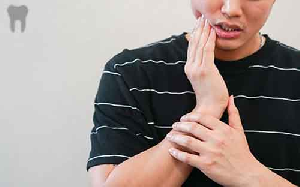
The coronavirus disease (COVID-19), caused by the severe acute respiratory syndrome coronavirus 2 (SARS-CoV-2), continues to ravage across the globe, with the number of confirmed cases topping 35.65 million.
It has been a long-standing debate on whether the coronavirus can spread through aerosols, which can hang in the air for long periods. After deleting its first update in September, the U.S. Centers for Disease Control and Prevention (CDC) recognizes that SARS-CoV-2 can spread through airborne particles.
The health agency updated its guideline, saying that COVID-19 is thought to spread mainly through close contact from person to person, including those who are physically near each other, or within six feet.
Mainly spreads during close contact
The primary mode of transmission of the virus is through close contact via respiratory droplets. However, the CDC now says that physically being near people, or within six feet of an infected person brings a higher risk of contracting the virus.
Further, the agency said that though the disease mainly spreads via respiratory droplets when a person with COVID-19 coughs, sneezes, sings, speaks, or breathes, the droplets can also form particles when they dry quickly in the airstream.
“As the respiratory droplets travel further from the person with COVID-19, the concentration of these droplets decreases. Larger droplets fall out of the air due to gravity. Smaller droplets and particles spread apart in the air,” the CDC wrote in the new guideline.
“With passing time, the amount of infectious virus in respiratory droplets also decreases,” it added.
Can spread by airborne transmission
In September, the CDC first updated its guideline, acknowledging that the coronavirus can spread through aerosols, but it was reverted a few days after.
The World Health Organization (WHO) also recognized the potential for SARS-CoV-2 to spread via aerosols, releasing guidelines for infection prevention, including avoiding closed areas with poor ventilation.
Now, the CDC’s new update says that COVID-19 can sometimes be spread by airborne transmission. It said that some infections could be spread by exposure to virus particles that are small and can linger in the air for minutes to hours. Also, it emphasized that these small particles could infect people who are further than 6 feet away from an infected person.
The CDC also mentioned evidence that in some situations, infected people with COVID-19 seem to have infected others who were more than 6 feet away, which often occurred in enclosed areas that had inadequate ventilation. These can happen when a person with COVID-19 breathes heavily when he or she is singing or exercising.
“Under these circumstances, scientists believe that the amount of infectious smaller droplets and particles produced by the people with COVID-19 became concentrated enough to spread the virus to other people. The people who were infected were in the same space during the same time or shortly after the person with COVID-19 had left,” the CDC explained.
Nevertheless, the CDC said that it is much more common for the coronavirus to spread through close contact with infected people than through airborne transmission.
It also reiterated that the virus less common spreads through contact with contaminated surfaces, but respiratory droplets can also land on surfaces and objects, making it possible that a person could contract SARS-CoV-2 by touching an object and then touching their mouth, eyes, or nose.
Protecting oneself
With the updated guideline, the CDC recommends that the best way to prevent infection is to avoid exposure to the virus. Staying at least six feet away from others, whenever possible, and covering the mouth and nose with a mask are essential steps to protect oneself from the virus. Also, regular handwashing, avoiding crowded indoor spaces, and ensuring enclosed areas are well ventilated can help prevent infection.
High-risk people or those who have comorbidities may need to stay home and avoid contact with others as much as possible. For sick people, they are recommended to stay home and isolate, while everyone is urged to routinely clean and disinfect commonly touched areas to get rid of virus particles.














